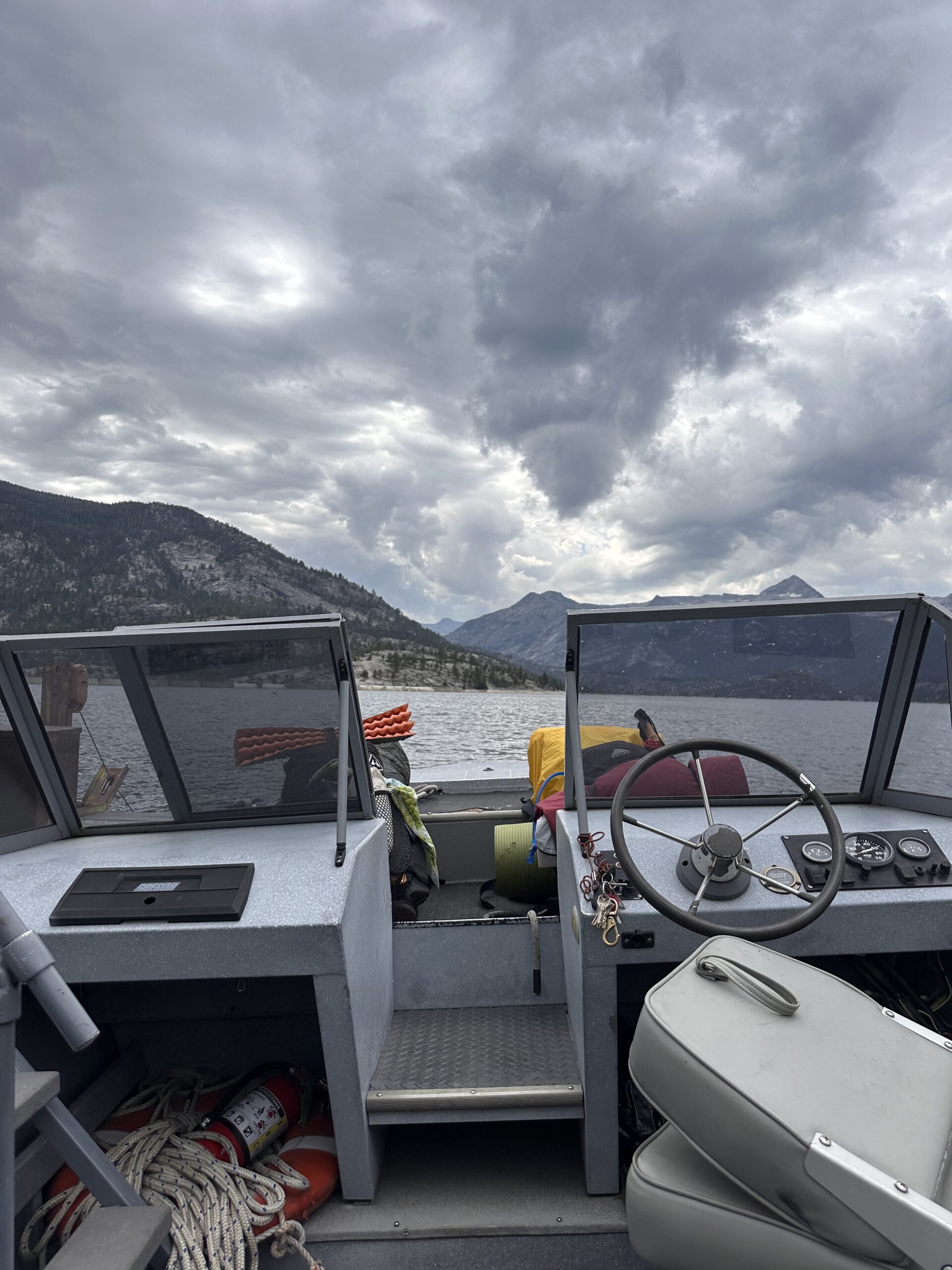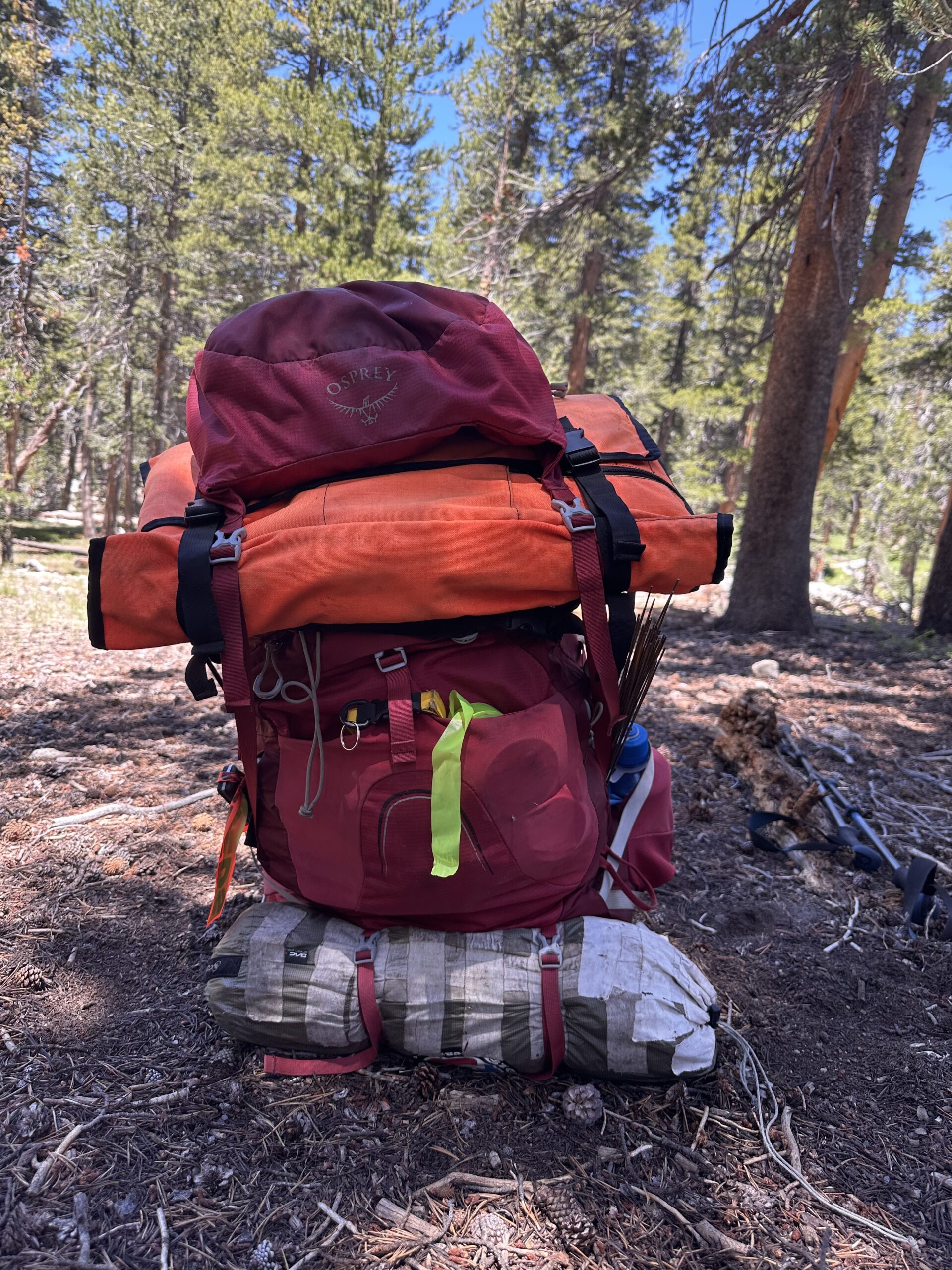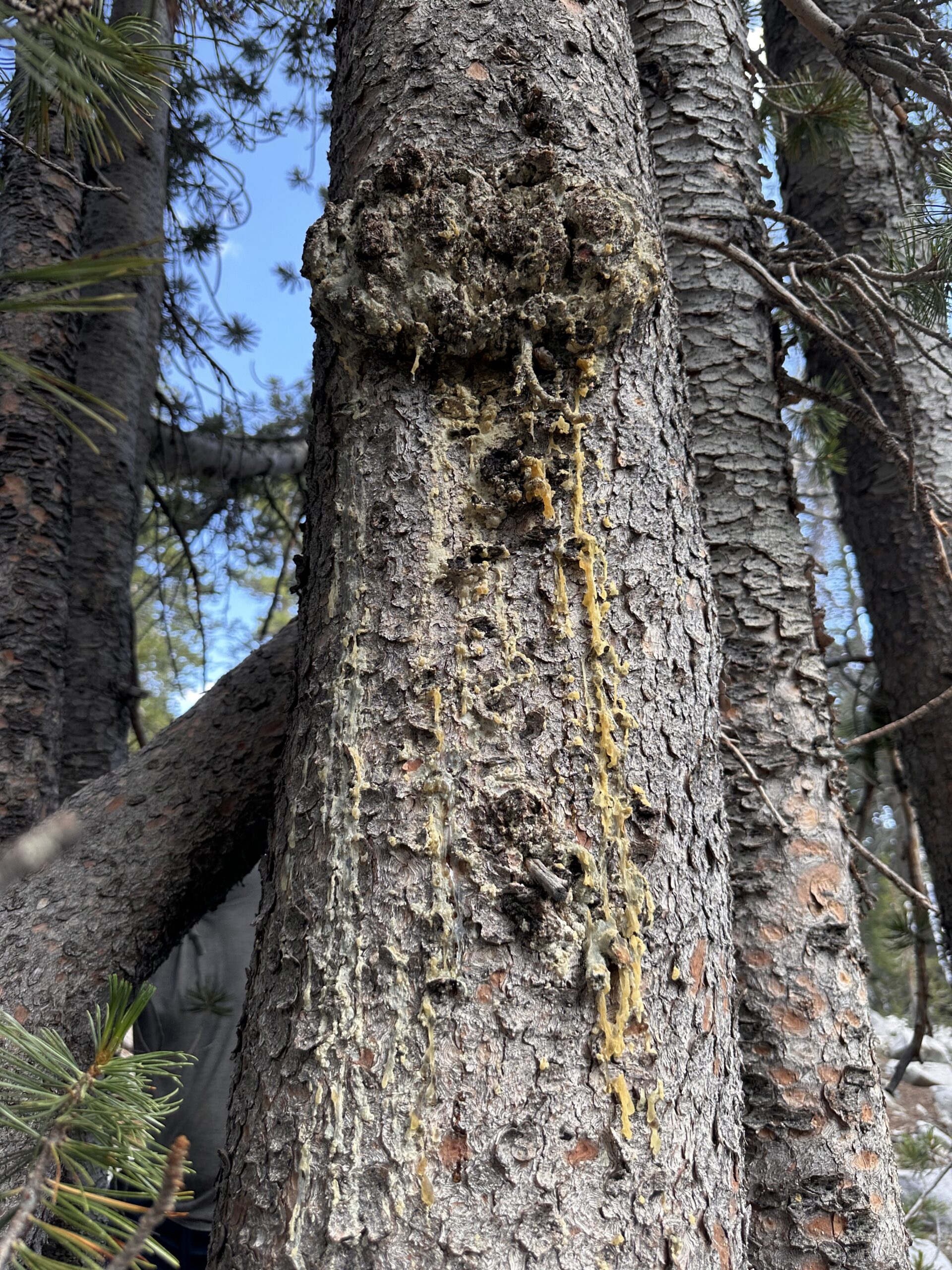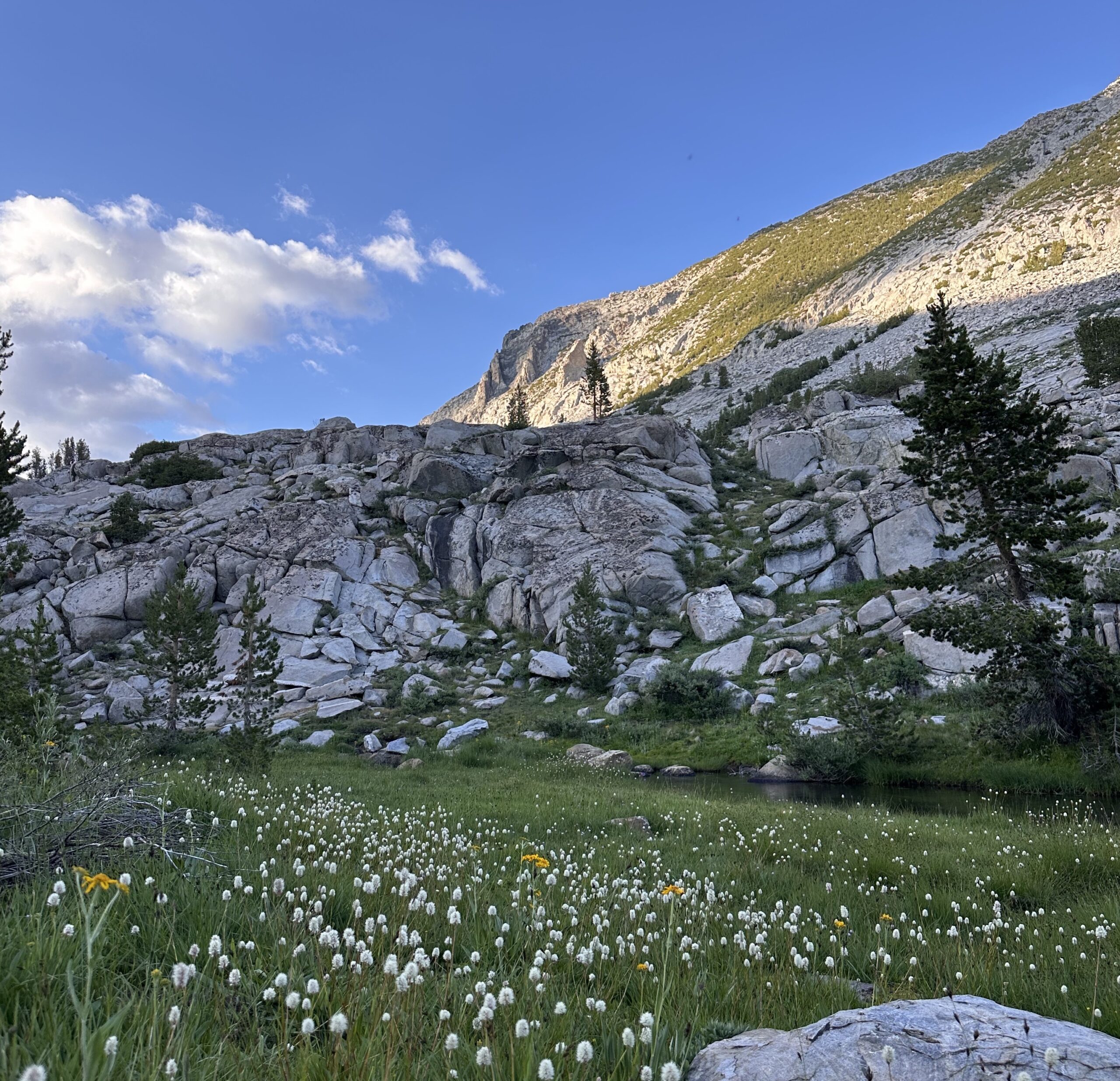July 18, 2024 – Florence Lake, CA
At last, after a four day hitch in the John Muir Wilderness, my three comrades and I have reached port. Before me lies Florence Lake. Our small Jon Boat is surrounded by 962 acres of moody blue, reflective of the passing storm. A calm sight, compared to the one across Florence. An elemental battle has commenced, between earth and water. Swiftly, the haunted clouds approach the granitic range, only to come to a stand-off, afraid to crest serrated ridges no longer visible from port. I remember what this same view looked like on Monday; partly cloudy and an unobstructed view of the entrance to the John Muir Wilderness. Now, it is Thursday. My feet ache. My shoulders yearn to be set free from my heavy pack. Yet, more than anything else, I have a huge smile on my face.

Before our arrival at the John Muir Wilderness, there was a population of Whitebark Pine, Pinus albicaulis, waiting for representation in the court of trail rerouting. A section of the John Muir Trail (JMT) currently cuts through a sensitive meadow. In order to protect and preserve the meadow’s proper functioning, plans to reroute the trail have begun. However, the area surrounding the meadow is Whitebark Pine habitat. Now that the species is federally listed, we were sent to map the population and assess its condition to properly plan a trail reroute that won’t affect the health or future of Whitebark Pine.
Our quest began with a boat ride across Florence and a jaunt up the San Joaquin River until reaching camp. We used this day to gain familiarity with the higher-elevation plants, and the weight our field gear added to our backpacking packs. We also learned the difficultly of maintaining radio contact with headquarters in the deep backcountry.


Come morning, it was game time. Eleanor and I felt reluctant to leave our homey tent and begin our 2,400ft climb to the reroute sight. Thankfully, instant coffee, oatmeal packets, and a couple snack breaks were enough to propel the four botanists up the pass. On July 16, 2024, we arrived at the Whitebark Pine population awaiting representation. Before starting our survey, we had a brief exchange and introduction with the Wilderness Crew working on the project.


We spent the rest of the day and the majority of the following day collecting data on the Whitebark Pines adjacent to the reroute and mapping the estimated extent of the population beyond the survey area. For individuals in immediate proximity to the reroute, we recorded their coordinates, phenology, height, DBH (diameter at breast height) if applicable, and the presence/severity of rust and pests. This was my first time working with trees and I found myself constantly having “a-ha!” moments. I enjoyed the luxury of examining a branch at eye level. The realization that keying could occur in positions other than the typical bot-squat, which will surely kill my knees before the age of forty, was quite the discovery.
An important part of our mission was to assess the extent of rust and pest disturbances on the Whitebark Pine population. All White Pines are susceptible to blister rust, which is a fungus (Cronartium ribicola) that infects Pines through the needles. The fungus spreads from the needles to the steam, causing discoloration and cankers. We observed signs of blister rust on over 95% of individuals in the area. Tree size or phenological stage did not seem to influence if a tree was susceptible to rust. We only saw a couple individuals with beetle damage, however when the infestation was present, it seemed to significantly impact the tree.



Our journey back to camp on day three was seamless and gave us time to reflect on our observations from the survey. Considering we were boardering the lower elevational extent of Whitebark Pine, its population was larger than I had anticipated. The population’s range seemed to continue further than we had time to walk. While the listed species felt abundant, its threats felt greater. Blister rust was present on almost every individual, creating dead stalks and impacting their ability to utilize nutrients and reproduce. I can’t help but wonder how such damage to a staple species, like Whitebark Pine, will affect already fragile montane and sub-alpine systems.
Those thoughts stuck with me at camp that night and still linger today as I gaze across Florence Lake to the mountains home to Whitebark Pine.

Thank you John Muir Wilderness and all the beings I meet along the way <3
I’ll be back soon to say hi.
